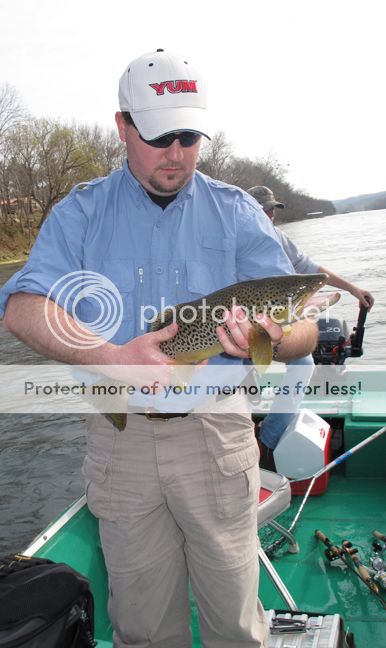 Trout fishing the tailwaters below a hydroelectric dam is a great way to make memories that last a lifetime, but varied power generation results in water levels that go from high and strong to low and weak in short order. Here’s how to catch more trout by letting the water flow determine your lure and where you cast it. Frank Saksa is a veteran guide on Arkansas’ White River, a world-class trout tailrace flowing from the Bull Shoals Dam, which has eight turbines and 17 spill gates. He fishes daily out of Gaston’s White River Resort, and the visiting anglers are going fishing regardless of water conditions, so he’s learned to adapt and maximize the bite. (By: Nathaniel Myson)
Trout fishing the tailwaters below a hydroelectric dam is a great way to make memories that last a lifetime, but varied power generation results in water levels that go from high and strong to low and weak in short order. Here’s how to catch more trout by letting the water flow determine your lure and where you cast it. Frank Saksa is a veteran guide on Arkansas’ White River, a world-class trout tailrace flowing from the Bull Shoals Dam, which has eight turbines and 17 spill gates. He fishes daily out of Gaston’s White River Resort, and the visiting anglers are going fishing regardless of water conditions, so he’s learned to adapt and maximize the bite. (By: Nathaniel Myson)
HIGH WATER
Two positives about a ripping current and high water are that the fish typically are feeding aggressively, and position in predictable spots. Saksa finds trout holding within shoreline cuts, on the protected sides of islands and below river drops, but says they stay close enough to the moving water so they can dart out and ambush prey.

A negative of fast, high water is that casts must be precise because the fish won’t move far to strike a lure. This condition also creates navigation and safety issues, so it’s always best to hire an experienced guide when the river is big and mean.
Saksa goes after jumbo brown trout with jerkbaits when the water is extra high. He throws a Smithwick Suspended Rattlin’ Rogue and casts close to bankside targets like downed trees or boulders that break up the current. He twitches the lure hard a couple times then lets it drift suspended and tight to the bank.
“Most fish hit when you’re not moving it,” he said. “The longer you can let it drift close to the bank, the better.”
LOW WATER
The upside to low water is that fish congregate in every deep spot in the middle of the river. The downside is that they spook easier and can become line-shy.
The White River is a big stream even during low-water periods, and Saksa suggests small hard plastic baits like the Rebel Teeny Wee Crawfish, downsized jerkbaits and tiny jigs. During low water on smaller tailraces, it’s tough to beat a 1/32-ounce Lindy Fuzz-E-Grub cast just above a deep hole and worked back with gentle twitches.
Danger level is minimal during low water times, so wading is a good tactic. Long casts remain important, so spool up with 2- or 4-pound line.
MODERATE LEVELS
Saksa says that in-between water levels result in fish spread throughout the river, so he stays on the move and covers lots of water. Some of his favorite areas for this water condition are eddies that don’t form until the river hits that level, and sloping sides of gravel bars barely covered with water.
When the river is at a medium flow, Saksa continually watches the bank to determine if the water is falling, rising or stable. When he’s been on fish in predictable locations and they suddenly disappear, that tells him that the level is changing. Fish will move up or down with the water level.

“Figure out where they moved to and adjust with them if you want to keep catching fish,” he said.
For moderate water levels he throws a mid-sized floating jerkbait like the Bomber 14A. He throws mostly baitfish color patterns, selecting a shiny chrome look for cloudy days and a duller white base coat under bright sunshine.
SAFETY WARNING
Regardless of water, fast-changing levels create navigational challenges and danger for boaters and waders alike. Wading anglers should always check water-release schedules before fishing, but don’t fully rely on them. They’re always subject to change.
Waders should pick out a rock nearby that is barely above the waterline to use as a reference. If it disappears, get out.
Rising levels create navigation issues for boaters, but a dropping level can leave them high-and-dry, unable to return to the ramp or dock. There is no simple answer for every situation, so anglers must remain vigilant and always err on the side of safety and wear a personal flotation device.
—–
Join ODU Magazine on Facebook here at this LINK…..
Join ODU Magazine on our Twitter fishing site here at this LINK…..
Join ODU Magazine on our Twitter hunting site here at this LINK…..
.
